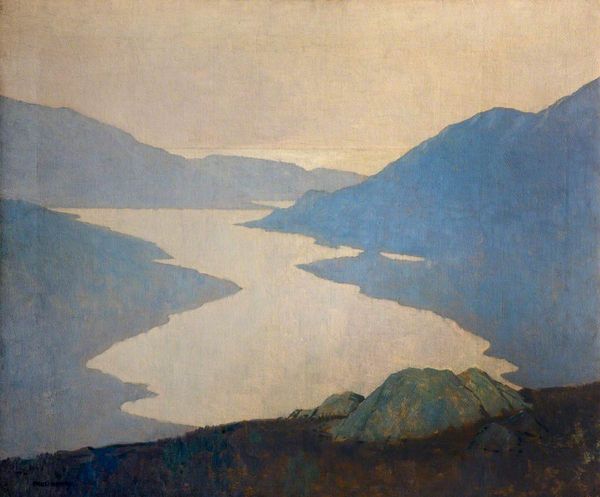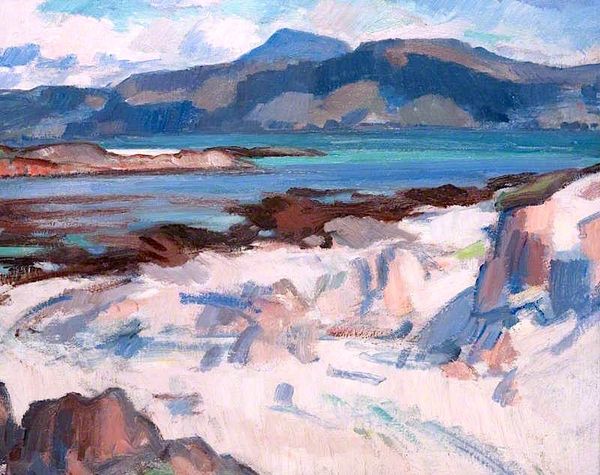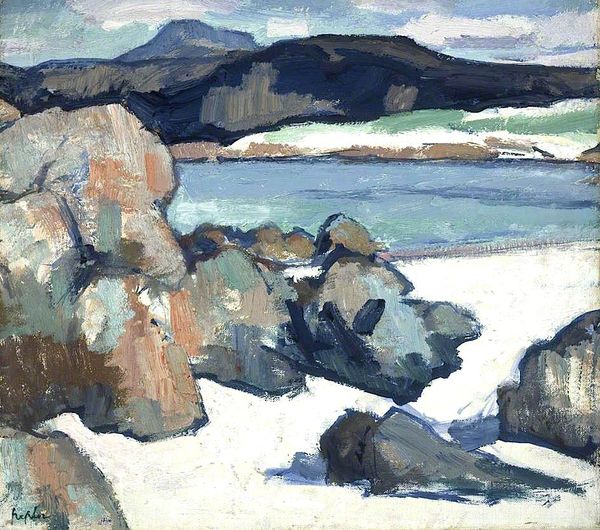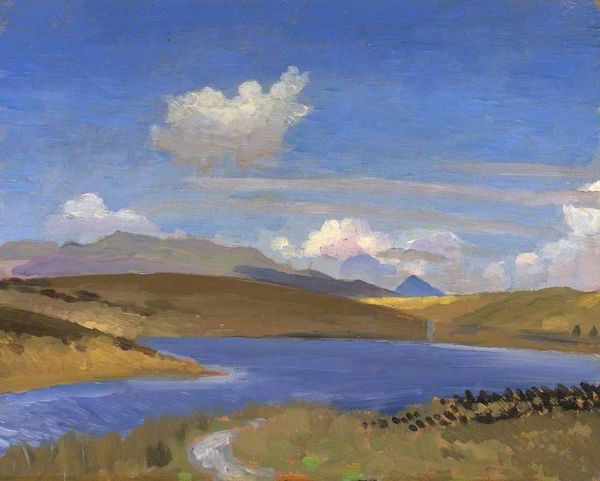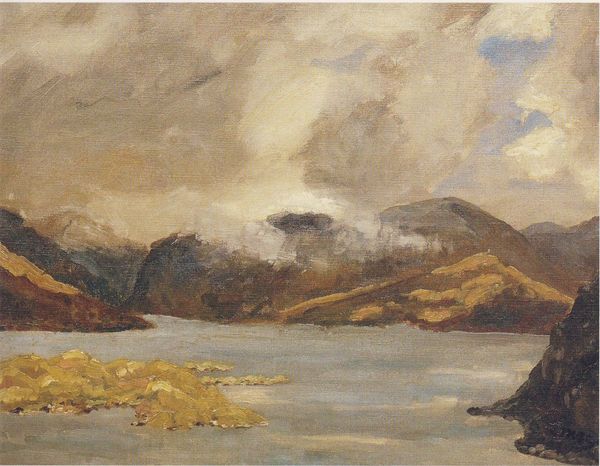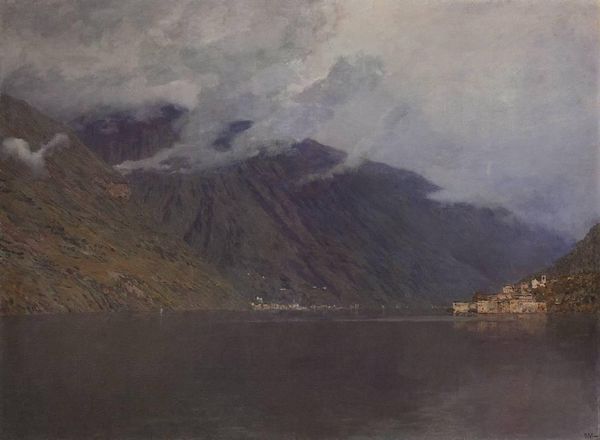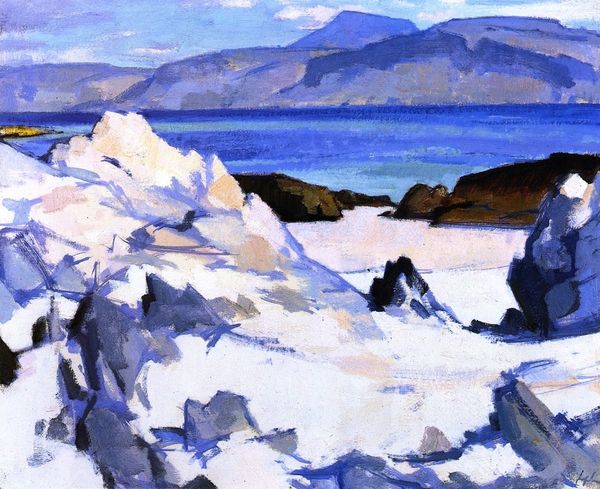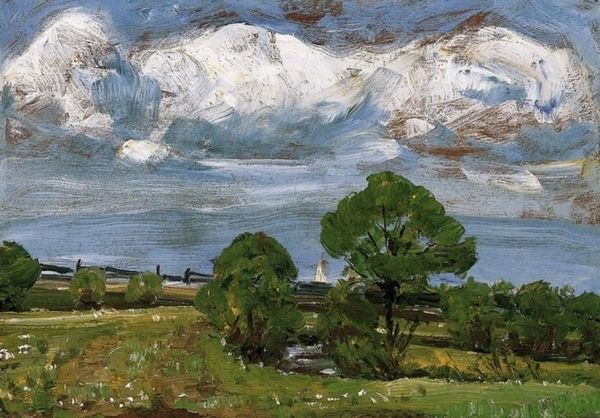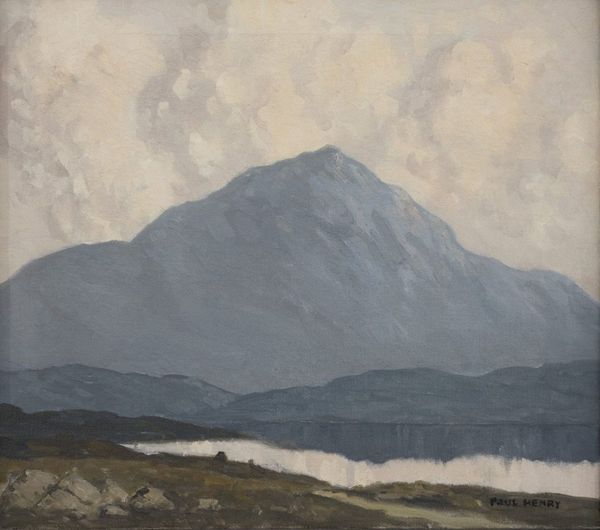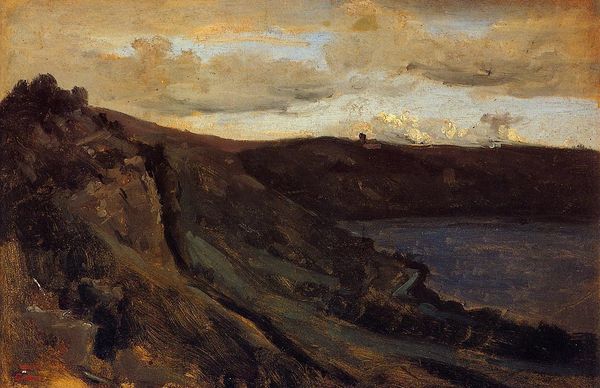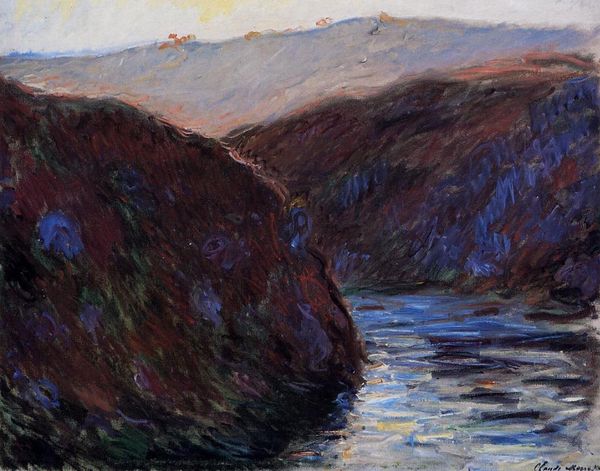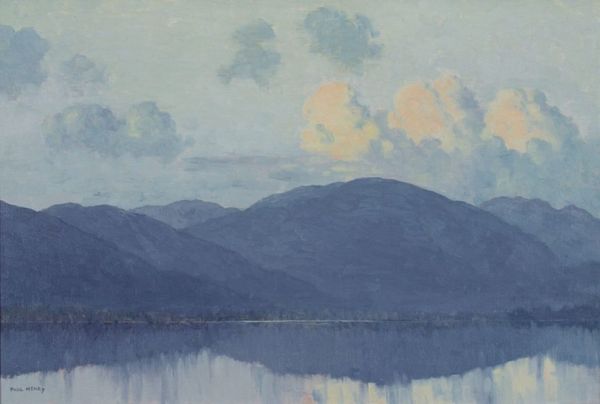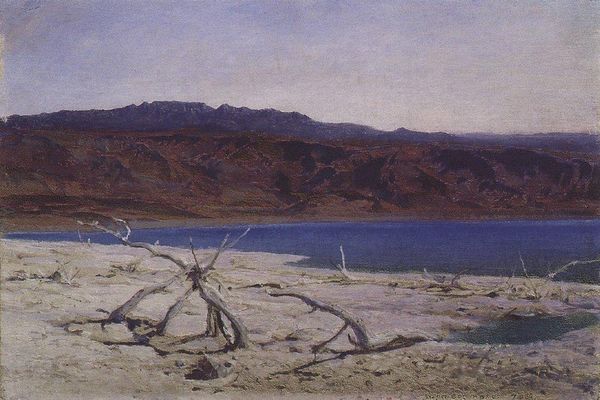
Copyright: Public domain US
Editor: This is Paul Henry's "Leenane," painted in 1913 with oil on canvas. It’s a captivating landscape, the light seems almost palpable. What do you see in this piece beyond the surface level depiction of a serene landscape? Curator: I see a meditation on labor and landscape. Think about the material reality behind this image: oil paint meticulously applied, likely *en plein air*. It suggests a direct encounter with the land, but one mediated by the artist's own labor. Consider the economic forces at play; who is commissioning and consuming such images, and how does that impact the way the landscape is presented? Editor: That’s a perspective I hadn't fully considered. I was initially focused on the Romantic aesthetic, but thinking about it as labor… interesting! So, what about Henry’s choice to paint outside; how does that material aspect change things? Curator: Crucially, plein air connects the act of painting to the rhythms of the land itself. It embeds the painting within a specific socio-economic and temporal framework. Who owned the land, and how were local populations engaging with that terrain? That also determines the conditions under which Henry makes this work. How are his activities different or similar? What opportunities were made available to him to create in this region? Editor: So, rather than just seeing a pretty landscape, we're really seeing a commentary – maybe unintentional – on class, access, and even colonialism as related to materials and craft? Curator: Precisely. By acknowledging these things, we destabilize traditional notions of “pure” landscape painting. Editor: I’ll never look at landscape paintings the same way again! This perspective really challenges me to go beyond aesthetics and examine the bigger picture, in all its complexity. Curator: And that's the goal – to appreciate the art not just for *what* it shows, but *how* and *why* it was made.
Comments
No comments
Be the first to comment and join the conversation on the ultimate creative platform.
